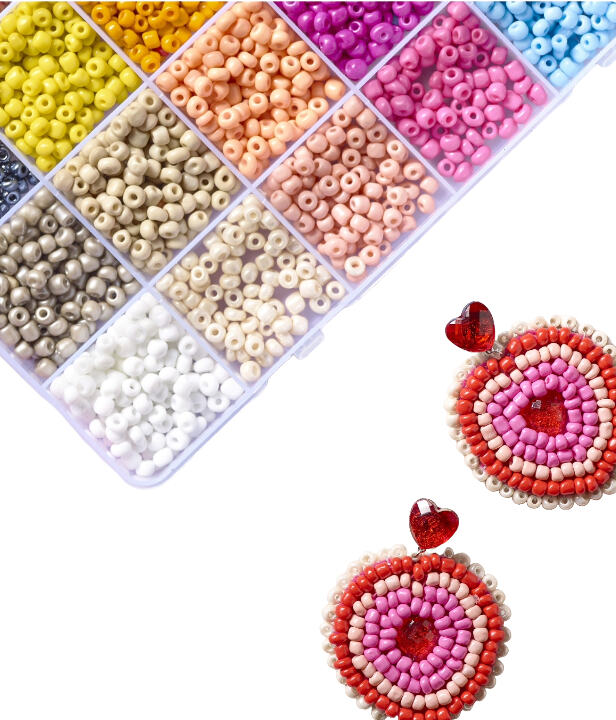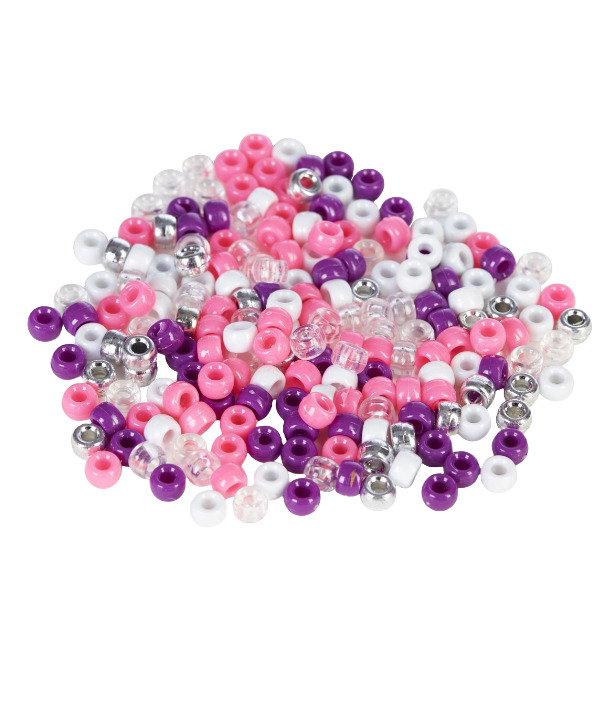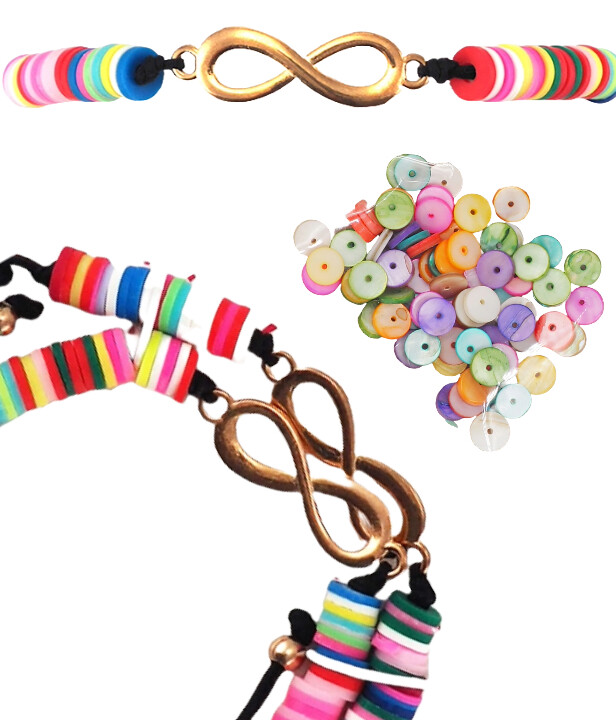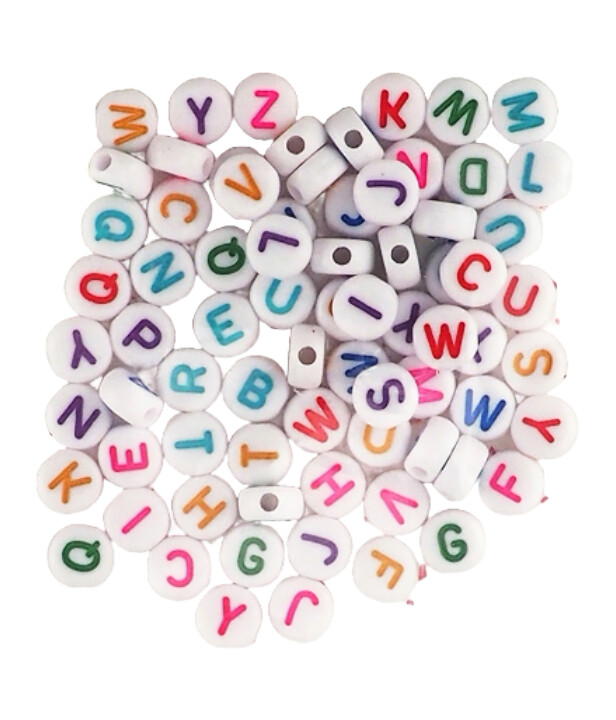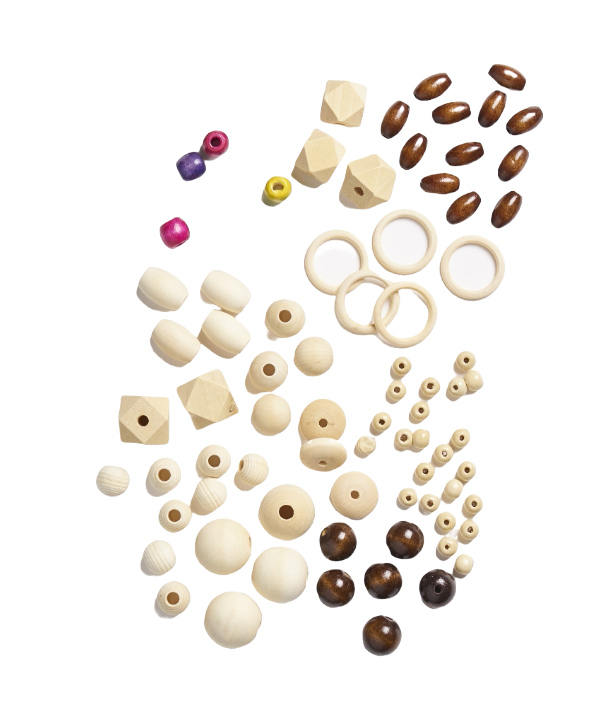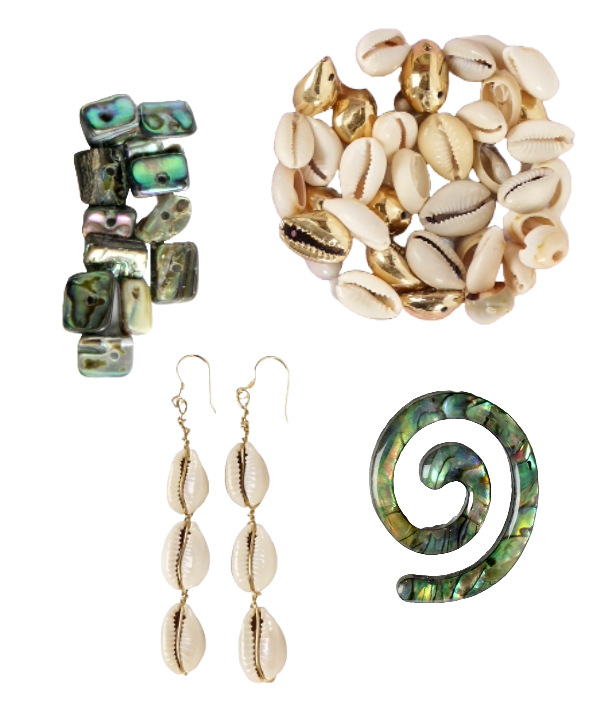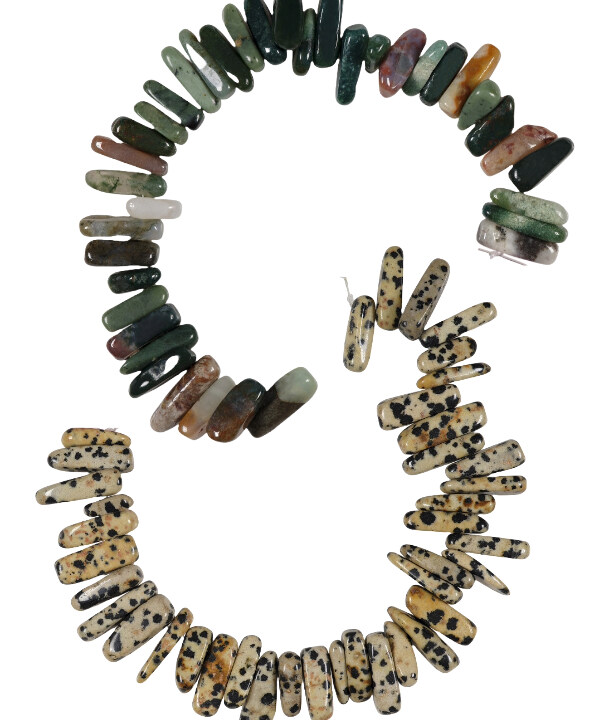 | ||
| Your browser is not supported. | ||
|
Please browse our site using any of the following options:
| ||
Your Complete Guide To Beads For Jewellery, Sewing & Craft Creations
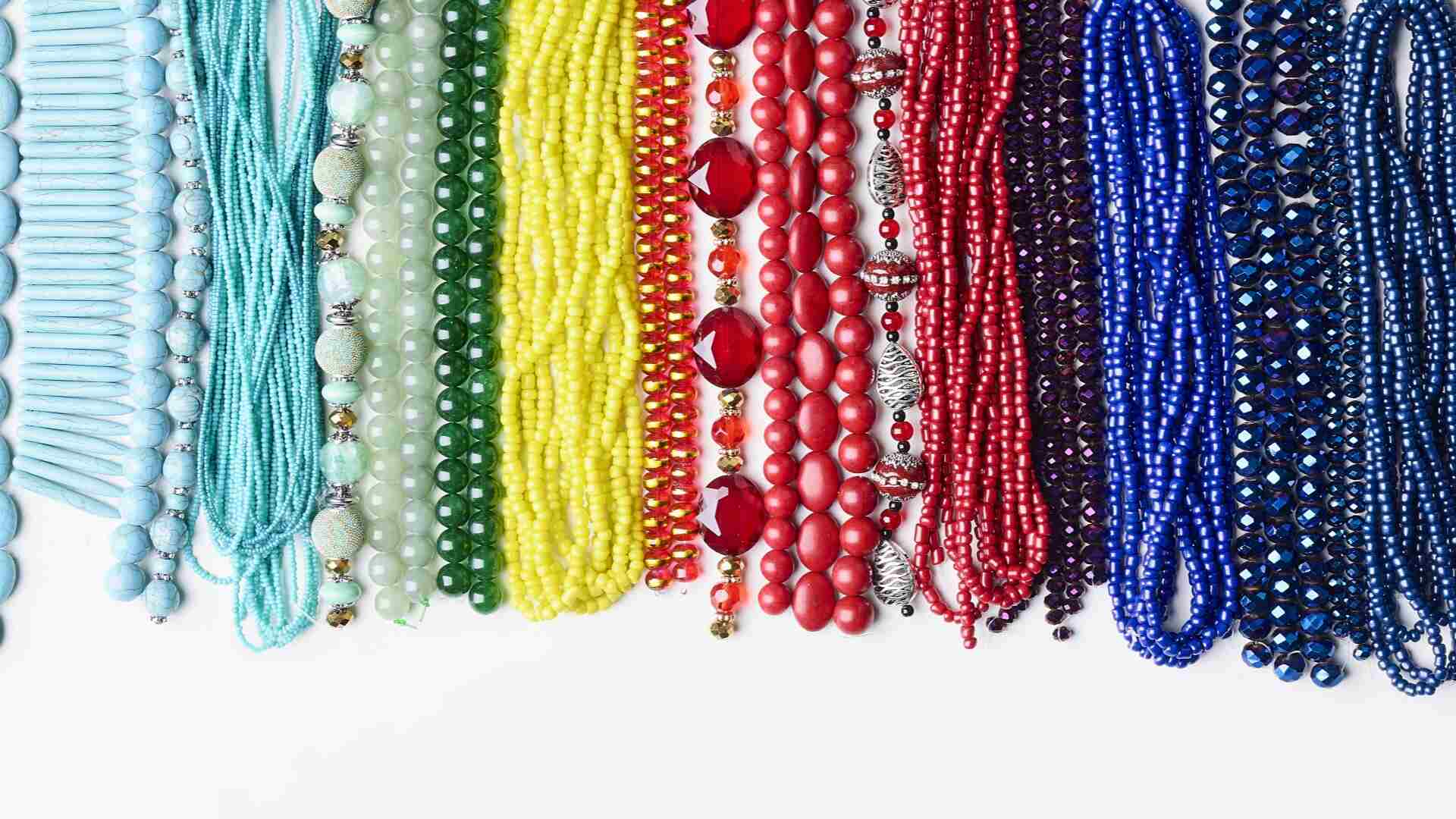
What Are Beads?
Beads can be defined as small decorative objects that have a hole that facilitates stringing, threading, weaving or sewing them onto fabric. Beaded jewellery is one of the oldest forms of ornamentation, with early examples of shell beads dating back 100,000 years.
Beads are a versatile art and craft material that can be used to create handmade beaded jewellery and objects. They can also be used to elevate garments and accessories with colour, texture and lustre. Beads are made from a range of different materials, and come in a huge variety of shapes and sizes to suit different creative projects. Explore our in-depth guide to learn more about beads, beading techniques and learn everything you need to know when getting started with making beaded creations.
Quick Links
Bead Types & Materials
Beads are the building blocks of many jewellery and fashion creations, but if you're new to the world of beading it can be tricky to know where to start! You can choose a huge variety of bead types, from tiny seed beads to large pony beads. Sometimes beads are categorised by their material, like glass beads, plastic beads and wooden beads. Beads can also be classified by size, shape and function, such as spacer beads or heishi beads. Below are some of the key varieties of commonly available beads, as well as some handy hints on what they're typically used for and how to use them in your creations.
Seed Beads
Seed beads are small beads which can be used for stringing, bead weaving and to embellish textiles through the creation of trims, motifs and beaded designs stitched directly into the fabric. They're classified with a number relating to their size, e.g. 6/0, 8/0, 12/0 - the larger the number, the smaller the bead. The zero in the name is pronounced "aught". Sometimes these numbers are also expressed with a degrees symbol, e.g. 8°.
Types Of Seed Beads
- Round Seed Beads (Rocailles): These are the most commonly found seed beads, and are used in stranded jewellery and for embellishing clothing and accessories.
- Tubular Seed Beads (Delicas): Delica seed beads are more tubular in form, and are uniformly shaped to exact dimensions. Their straight sides and consistently sized holes make them ideal for bead weaving projects, as they will neatly fit together without any gaps. Common brands for tubular seed beads are Toho and Miyuki, both from Japan.
Seed Bead Size Chart
Below is a quick guide to the most commonly found seed bead sizes. Note that these dimensions can vary between manufacturers.
Size | Diameter | Size | Diameter |
6/0 or 6° | 3.3 mm | 13/0 or 13° | 1.5 mm |
7/0 or 7° | 2.9 mm | 14/0 or 14° | 1.4 mm |
8/0 or 8° | 2.5 mm | 15/0 or 15° | 1.3 mm |
9/0 or 9° | 2.2 mm | 16/0 or 16° | 1.2 mm |
10/0 or 10° | 2 mm | 18/0 or 18° | 1.1 mm |
11/0 or 11° | 1.8 mm | 20/0 or 20° | 1 mm |
12/0 or 12° | 1.7 mm | 22/0 or 22° | 0.9 mm |
Pony Beads
Pony beads are one of the most common types of plastic beads. Larger than seed beads, these lightweight beads have a rounded and slightly tubular shape, and feature a large hole that makes them easy to thread onto cord or thonging. Their generous size and ease of use make them a great option for kids to use to make simple threaded bracelets while they develop their fine motor skills.
Heishi Beads
Heishi Beads are defined by their unique flat, disc shape. Traditionally made from shells, these days you can also find heishi-shaped beds made from plastic, polymer clay, metal and wood. They usually measure 6 mm - 8 mm in diameter, with a height of around 1 mm. Heishi beads can be used in jewellery pieces as spacer beads, or stacked together to create a vibrant coloured tube-like strand that's perfect for necklaces and bracelets.
Spacer Beads
Spacer beads are used for additional texture in beaded or stranded jewellery. Typically made from metal, they may come in plain round and tubular shapes, or in more ornate forms like butterflies, hearts or stars. They're a great way to add length to your designs, highlight feature beads in your creations or add a metallic accent to your colour palette.
Glass Beads vs Plastic Beads
Aside from timber, two of the most common materials used to make beads are plastic and glass. Each has its own unique advantages and benefits when used to create jewellery and craft projects. Some types of beads like faux pearl beads or pearl-style beads can be made from either glass or plastic depending on the desired level of realism and weight in the final product.
- Glass beads: Glass can be formed, treated and coloured to create just about any type of bead. Seed beads and heishi beads are often made from glass, and come in both shiny and matte finishes. They also come in the form of rondelle beads and bicone beads, as well as cubes, squares, teardrops, bugle beads, dichroic colours and more. Faceted cut glass beads like hex-cut beads or bicones will capture the light and introduce gorgeous shine to jewellery. Large glass beads will lend extra weight to jewellery pieces, helping them to beautifully hang and drape when worn.
- Plastic beads: Plastic can be used to produce lightweight beads in a range of opaque and translucent colours. They're generally a more affordable alternative to beads made from glass or semiprecious stones. Popular types of beads made from plastic include alphabet beads used to create friendship bracelets and pony beads.
Wooden Beads
Wooden beads are a popular choice for jewellery and craft projects. They're typically lightweight, and come in a wide variety of sizes and shapes. The natural wood grain and matte texture lends an organic accent to jewellery pieces or crafted objects like macrame. Choose colourful wooden beads for a vibrant effect, or naturally toned beads to create a neutral colour palette. You can also try customising large wooden beads by decorating them with craft paints for a truly unique look.
Shell Beads
Add a coastally-inspired element to your beaded projects with shell beads. Different types of shell beads include natural shells like cowrie and conch shells that have pre-drilled holes for threading. You can also find beads in shapes like round, square and heishi made from mother of pearl shells or paua shells to add a lustrous sheen to your creations.
Stone Beads
Beads can also be made from natural semi-precious stones like agate, jasper, jade, fluorite, turquoise, moonstone, rose quartz and amethyst. Stone beads may be formed into shapes, or come in more natural forms known as chips. The irregular shapes and natural lustres add a beautiful natural touch and weight to jewellery pieces.
Make Your Own Beads - DIY Guide
Once you're familiar with the shapes, sizes and colours of beads you like to work with, why not try creating your own? Polymer clay, paper and cast resin can all be used to make unique and durable handmade beads for jewellery. You can also experiment with drilling holes into natural materials to create beads, or wrapping found objects with looped wire to add to your jewellery pieces.
How To Make Paper Beads
You can create stunning handmade beads with a range of different papers like washi paper, printed magazine paper, origami paper or cardstock. This traditional craft dates back to the Victorian times, and was popular in the 1920s and 1930s to make paper bead jewellery. To make paper beads, you will need:
- Paper of your choice
- Pencil & ruler to mark cutting lines
- Scissors, craft knife or rotary cutter
- Cutting mat
- Metal skewer, thin wooden dowel or small gauge knitting needles
- PVA glue
- Paint brush & varnish
Instructions:
- Mark the reverse side of your paper with long isosceles triangles from edge to edge. Good measurements to start with are a base width of between 1.5 cm - 3 cm (this will form the length of the bead) and a height of 20 cm to 30 cm (this will be rolled up and become the bead's diameter).
- Carefully cut out your triangles on your cutting mat. Using a cutting knife or rotary blade pressed against the edge of a metal ruler will yield the straightest cut edges.
- Take your metal skewer or dowel, and start rolling the paper strip over it from the wide base of the paper triangle so that it starts forming a cylinder.
- Apply a little glue below the line of the skewer and start to roll the paper. Continue to add glue to the paper as you roll, ensuring the tip of the triangle stays aligned with the centre of the bead.
- As you approach the end of the paper, apply a thin layer of glue to the last 3 cm of length.
- Slide the rolled paper bead off the skewer and thread onto a cocktail stick to try. You can secure the cocktail stick into a foam block while it dries.
- Once you have rolled all your beads, apply a few thin layers of varnish to the beads, letting it dry in between each application. This will help protect and harden the beads.
Top Tip: If you don't have varnish or prefer not to use it, you can also use PVA glue or Mod Podge in its place. This is a great option if you're doing this activity with children.
oven dry clay is a popular medium for creating beads for jewellery making. Roll out your polymer clay to the desired thickness, and use cutters to create flat shapes of your choosing. Then create a small hole or holes to facilitate hanging or threading. If you want to create round polymer clay beads, there are special modelling tools & accessories available that help you create perfectly rounded spheres. Once you have created your beads, bake them in the oven according to the manufacturer's instructions.

resin jewellery making is a great way to expand your creative repertoire. Clear UV resins can be coloured with resin tints, or you can embed objects like pressed flowers, glitter or polymer clay inclusions to create unique jewellery pieces. You can make your own custom beads using specialised resin moulds, or even cast your own moulds with silicone resin!
Bead Project Ideas, Tips & Tricks
At Spotlight, you can discover a great range of FREE jewellery & beading projects to inspire your creations! Discover how to make necklaces, earrings, and friendship bracelets, as well as other beaded accessories like bags, coasters and keyrings. Explore a variety of materials like cord, leather, polymer clay and beads to combine with beads of your choosing.
Beading Tips & Tricks
- Consider using a variety of colours, textures and shapes to add visual interest to your beaded jewellery pieces.
- Go bold with large stone, glass or wooden beads to create dramatic statement jewellery items.
- Create intricate designs with small seed beads in woven designs, or use multiple strands of seed beads to create pieces with beautiful weight and texture.
- Use a bead mat to set up your working surface. They'll provide a contrasting background for your beads so you can see them easily, while the plush material will prevent them from rolling around on your workbench.
- Balance your designs by alternating beads of different colours or shapes in repeating patterns. Try grading beads from smallest to largest for an undulating effect. It's a great idea to lay the beads out in your chosen sequence on a bead mat for ease of creation.
- Choose your stringing materials wisely - leather thonging and cord are great options for threading large beads, whereas seed beads are best suited to specialised bead thread which is very fine but also strong. Use beading needles with seed beads to easily thread your beads onto the strand.
- Keep your beads organised and sorted with the right bead storage Explore compartmentalised boxes, clear containers and storage jars so you can see all your materials at a glance while preventing beads and findings from getting mixed together.
Discover A World Of Colours, Textures & Shapes With Beads At Spotlight
Whether you're interested in bead weaving with seed beads, making chunky necklaces with stone beads or making your own beads for a unique style statement, Spotlight has all the beads and materials you need to get creative! Learn more with our DIY guide to using jewellery findings, tools & stringing materials, and find all the essentials in our range including jewellery findings, bead tools & accessories and bead thread, cord & stringing materials to complete your creations. Explore the complete beads & jewellery making range Explore the complete beads & jewellery making range online, or head into your nearest Spotlight store to shop the range in person.




